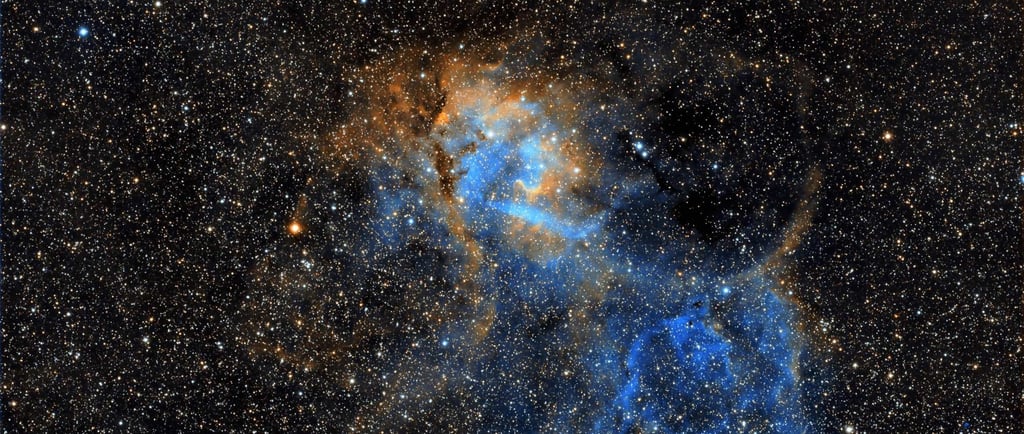SH2-132: The Lion Nebula


Introduction to SH2-132
Located in the southern region of the constellation Cepheus, SH2-132, commonly known as the Lion Nebula, is a stunning celestial marvel. This region is characterized by its intricate tapestry of star clusters, vibrant emission nebulae, and mysterious dark dust regions. Situated approximately 10,000 light years away in the Perseus Arm of the Milky Way galaxy, the Lion Nebula showcases the remarkable beauty of space and the processes that govern the formation of stars.
The Wonders of Star Formation
The Lion Nebula is not only an impressive visual spectacle but also a significant site for astronomical research. Within its boundaries, numerous star clusters emerge from the surrounding gas and dust, illuminating the area with their radiant light. These young stars contribute to the nebula's emissions, creating a vivid palette of colors that can be observed through telescopes. The interplay between the dark dust regions and the glowing nebulae creates an awe-inspiring contrast, capturing the interest of both amateur stargazers and professional astronomers alike.
The Significance of Emission Nebulae
Emission nebulae, like those found in SH2-132, are crucial for understanding the lifecycle of stars. They are formed when hot gases from young stars ionize the surrounding material, causing it to emit light. This process not only reveals the presence of newly formed stars but also highlights the ongoing star formation processes within the nebula. As researchers continue to study the Lion Nebula, they gain insights into the complex dynamics of stellar development and the influence of massive stars on their surroundings.
The study of SH2-132 and its components contributes significantly to our comprehension of the Milky Way's structure. By observing these celestial objects, astronomers can gather essential data about the distribution of stars and gas in our galaxy, enhancing our knowledge of cosmic evolution. The Lion Nebula, therefore, serves as a dynamic laboratory, enabling scientists to witness the interactions between light, dust, and energy over vast stretches of time.
In conclusion, SH2-132, the Lion Nebula, stands as a testament to the universe's breathtaking beauty and complexity. Through the exploration of star clusters, emission nebulae, and dark dust regions, we not only learn about the cosmos but also about the very nature of existence itself. As we continue to enhance our observational technologies and methodologies, the Lion Nebula will undoubtedly remain a focal point in our quest to unravel the mysteries of the universe.
